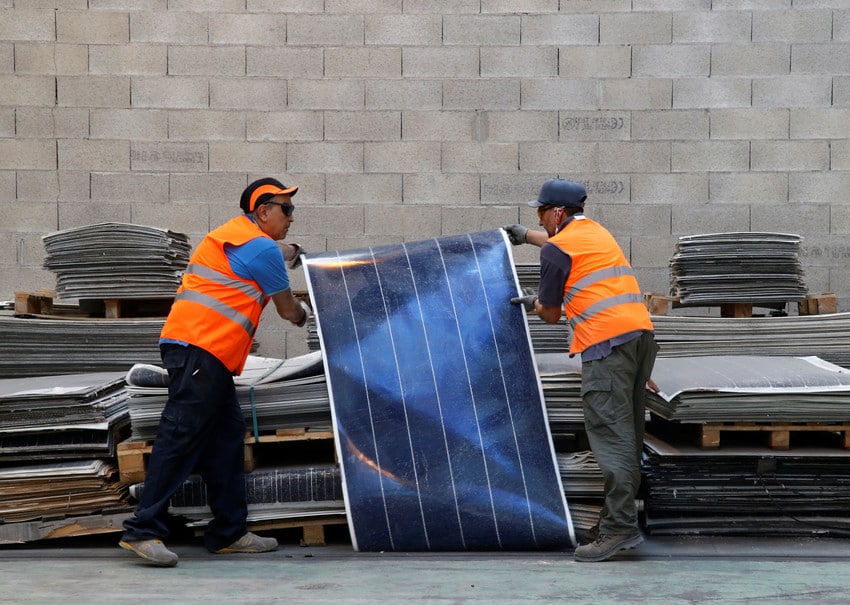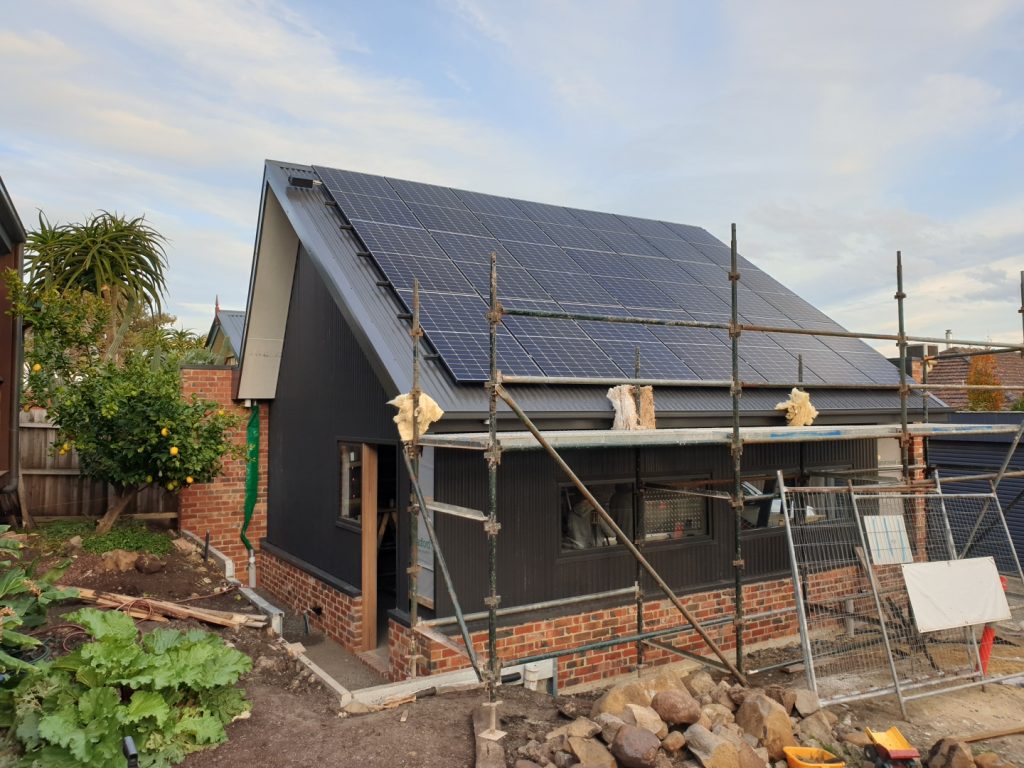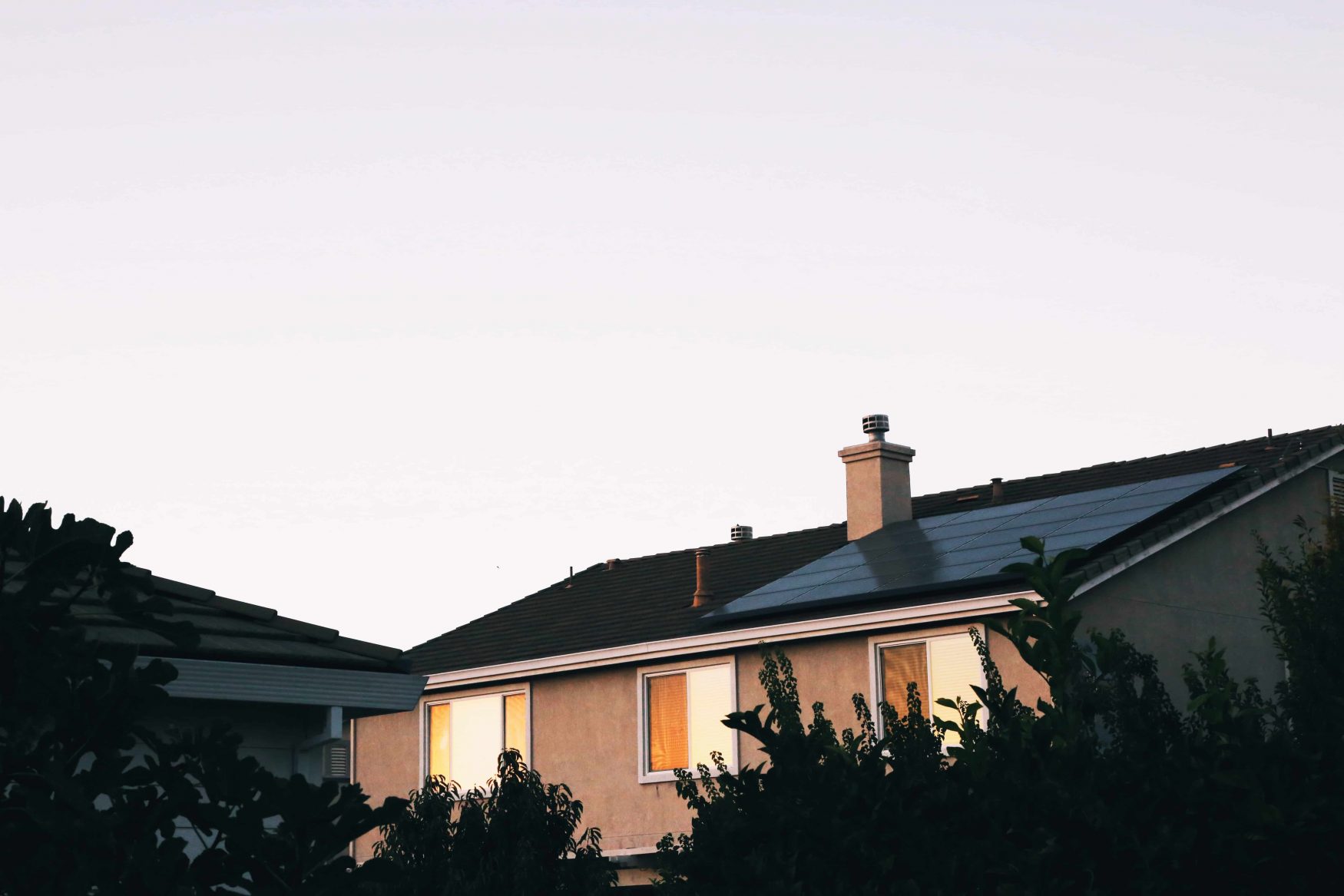
Solar power is often mentioned as a viable alternative for the future of clean energy. More and more people, from individual households to massive utility projects, are switching to solar power as a more sustainable alternative to traditional energy sources.
Are you aware that solar energy is also counted among the renewables? In recent years, solar power has become popular due to its renewable nature.
Yet, what sets solar power apart from other energy options? In this blog, let’s find out why solar power is considered a renewable energy source and highlight some of the advantages of using solar energy.
Be comfortable with your cup of joe and settle in for an enlightening read as we investigate why solar power is emerging as a promising solution to our energy demands in the future.
What Exactly Is Renewable Energy?
The term “renewable energy” is used to describe energy that is renewed spontaneously and can be maintained throughout time.
Sunlight, wind, rain, tides, geothermal heat, and biomass are all examples of clean, renewable energy (organic matter such as wood, crops, or waste that can be converted into energy).
Renewable energy sources are continually renewed and can be used to generate electricity or provide heating and cooling without depleting the resource, in contrast to fossil fuels like coal, oil, and natural gas, which are finite and will ultimately run out.
Since renewable energy sources emit negligible amounts of glasshouse gases, they are an important tool in the fight against climate change.
It is possible to lessen the environmental damage caused by human activities and lessen our dependence on finite fossil fuels if we switch to renewable energy.
Because the sun is an ever-present and limitless supply of energy, solar power can be considered a renewable resource. Through the use of solar panels, the sun’s photons (a source of energy) can be captured and transformed into electricity.
Sunlight, in contrast to nonrenewable fossil fuels, is a nearly endless supply.
It is believed that the sun’s output of energy exceeds the global need for electricity by a factor of more than 10,000.
Solar energy is another green and long-term option. Since it does not contribute to global warming by emitting glasshouse gases or other pollutants, it can be used as a powerful weapon in the fight against global warming.
Solar power is not only eco-friendly because it uses a renewable resource, but it is also adaptable because it can be used to power anything from homes and companies to remote places and even outer space.
There are as many renewable energy methods as different natural energy sources.
Types Of Renewable Energy
Standard Technologies
- Most people are aware of solar energy as one of the
- Wind energy has the largest installed base.
- One of the first forms of energy generation is hydropower.
Technologies For Capturing Energy
- Energy from the Earth’s core, or geothermal
- Bioenergy
- Energy is drawn from the ocean.
Grid Augmentation Technologies
- Capacitor banks
- The need for electricity can be anticipated with the use of smart technologies.
A Solar Power System’s Four Main Components
A residential solar power system consists of four primary components: A residential solar power system consists of four primary components: A residential solar power system consists of four primary components:
- Concentrated solar panels
- Inverter for Solar Power
- Racking/Mounting
- Consumption Monitor
Now, let’s break down each of these into their parts.
Concentrated Solar Panels
Grid solar cells are housed between two sheets of exceptionally durable glass in a solar panel’s frame. Solar photovoltaic panels collect sunlight and convert it into direct current (DC).
In terms of panel construction, a variety of cell types & cell configurations are possible:
“Monocrystalline half-cut” panels make up most of today’s market.
Someone, a few years ago, realised that by slicing its square solar cells into half, they might make solar panels slightly more efficient and more resistant to shading.
As a result, solar panels with cuts in them appeared. Because of how effectively they perform, they have essentially cornered the market.
Whether they are monocrystalline, polycrystalline, conventional, half-cut, or shingled solar panels makes little difference.
The most important thing is to find a reliable brand with local support in Australia.
Inverter For Solar Power
The inverter is the second most important part of a homeowner’s solar power system. There are primarily two varieties:
- All around the size of a suitcase, a string inverter
- Microinverters are tiny—about the size of an average book.
Each solar panel is wired to a wall-mounted inverter. Each solar panel needs a microinverter mounted on its back or underneath/beside it.
Finally, “power optimisers” represent a third viable alternative. They combine elements of both kinds. Each panel (or a subset of panels) in an optimiser system is connected to a string inverter mounted on the wall.
Unlike string inverter systems, microinverter & optimiser systems offer more design freedom for challenging roofs.
Nonetheless, salespeople highlight the fact that they are superior to string systems in terms of dealing with shade.
While this may be true for lower-end string systems, modern high-end systems employ sophisticated algorithms that provide comparable results under various shading conditions.
Because of the lower voltage at which microinverters operate, they provide less risk in the event of an installation malfunction. But this risk can be reduced by selecting a qualified installer (for help with this, read on) and scheduling yearly checks afterwards (for further details, see below).
Racking/Mounting
How do the solar panels get attached to the roof? This racking.
Many different manufacturers produce racking systems. When it comes down to it, racking is just bolted-together aluminium.
Except for high-end ones like Radiant, most brands are identical. They provide greater design freedom and might be less prone to corrosion over the long term in a given system.
The brands we’re familiar with are listed in the table below. A high-end brand costs about $100 more per kilowatt than a budget.
Consumption Monitor
Small and discreet consumption monitors can be installed on your switchboard. These may be purchased for roughly $500 and are used to track the flow of electricity into and out of the grid.
A solar power system can be set up even if there is no way to track the energy used. Nonetheless, you should seriously consider buying one.
This is because standard off-the-shelf inverters only provide information on the amount of energy being produced by your solar panels. You have no idea when and how much electricity your house consumes.
You may get much more out of your monitoring software with the addition of a consumption monitor. Production and consumption data will be displayed:
The easiest and most cost-effective method of controlling your energy consumption is laid bare before your eyes. For the extra information they provide, We believe that consumption monitors are well worth the investment.
Use Of Solar Energy In Australia

In 2020-21, solar PV was the fastest-increasing generation type in Australia, accounting for almost 10% of total power generation.
There are more than 11 GW of rooftop solar PV in Australia, enough to power more than 30 per cent of homes.
Australia is also seeing an increase in large-scale solar farms, with over 7 GW of power now connected to the country’s electricity system.
How Do We Help Solar Projects?
Our goal is to help Australian consumers, businesses, and employees profit from the global transition to net-zero emissions by hastening the rate of pre-commercial innovation.
We have invested over $230 million in around 130 solar R&D initiatives since 2012, with $80 million going to an Australian Centre for Advanced Photovoltaics alone (ACAP).
Successful outcomes of our project:
- In 2021, Sundrive’s silicon solar cell converted 25.54 per cent of the sunlight that hit it into usable electricity, a record-breaking achievement for a commercial-sized solar cell.
- In 2019, we will test having solar, and wind farms feed their short-term generation estimates into National Electricity Market’s central despatch system using the $9 million in cash we have set up for this purpose.
We are investing in research and development to provide the extremely low-cost renewable power necessary to ensure the long-term success of emerging sectors in Australia, such as the clean hydrogen & low emissions metals industries. What we’re concentrating on is:
- MaximiseMaximise the performance of solar panels.
- Cut down on the costs of the solar PV system as a whole.
We also put money into R&D and demonstration projects for next-generation solar thermal technologies, which are known as concentrated solar thermal.
The Advantages Of Solar Energy
The sun-baked landscape of our country is ideal for solar electricity, and there are numerous advantages to making the switch.
More Environmental Benefits
Using solar energy to power your homes or company is one approach to reducing your carbon footprint. As solar energy is converted into electricity instead of fossil fuels, there is no contribution to global warming.
The sun is a source of clean energy. Thus there will never be a shortage of it. Fossil fuels like coal and gas will be depleted in the distant future. And there’s no shortage of the bright stuff in our state.
By converting sunlight into electricity, solar panels on a roof produce power in an environmentally friendly and silent manner.
Reduce Your Electricity Bills
If you use the energy generated by the solar panels throughout the daylight hours instead of connecting to the grid, you ought to see a reduction in your monthly electricity costs.
Increase The Visibility Of Your Property
One-quarter of all residences in rural Queensland already use solar energy. Solar photovoltaic (PV) systems are becoming more common, and they could increase the value of your home or commercial property if you ever decide to put it up for sale or rent it out.
Can Be Connected To The Power Grid
You may be able to export and sell any unused solar power returned to your electricity supplier once the solar PV system has been approved1 and linked to the grid.
Low Maintenance
More maintenance is needed for grid-connected solar PV installations.
Your solar panels should survive for about 25 years if you have a certified electrician inspect them once a year and clean them as necessary.
Throughout that period, it’s probably going to be necessary to replace the inverter at least once.
Compared to more conventional energy options like fossil fuels, solar energy has a number of benefits.
Solar power is appealing because it doesn’t deplete the earth’s resources because it’s a renewable energy source. In contrast to fossil fuels, which are nonrenewable and will ultimately run out, this is a renewable resource.
While using solar energy, no hazardous pollutants or glasshouse gases that contribute to climate change are released into the atmosphere.
So, it is a potent weapon in the combat against climate change and pollution in the air.
The low price of solar power is another perk. While the cost of solar panel installation can be costly, the cost of generating electricity from solar power has dropped dramatically in recent years.
Installing solar panels can reduce monthly energy costs because the electricity they generate is almost free.
To add to that, solar panels need almost no upkeep, which means mechanical failures and the expenditures related to them will occur far less frequently.
In comparison to more conventional energy sources, solar energy has many advantages.
It is dependable, sustainable, and inexpensive. Solar energy is projected to play a more significant role in the future in supplying the world’s energy needs as the technology improves and the price of solar panels decreases.
FAQs About Solar Power
What is the main challenge with solar power?
Takes up a lot of room. To generate more electricity, you’ll need more solar panels to bring in more of the sun’s rays. However, not all roofs are large enough to accommodate the quantity of solar PV panels you might want.
Can I power my home solely with solar energy?
Solar energy has provided electricity to entire villages in various countries. Consequently, it is possible to use only solar energy to power a home. It can run anything from handheld calculators to whole cities, making it the most versatile power source ever created.
How long can a house run on solar power alone?
A 10 kWh battery can provide enough energy to run a home’s essentials for at least 24 hours without using any auxiliary power sources, such as air conditioning or electric heating.
What happens to solar power when batteries are full?
When the storage capacity of the batteries is at capacity, the system will stop drawing energy from the sun. Although solar panels will keep producing electricity, it won’t be consumed or stored until there’s a sufficient demand for power or enough room in the batteries.
Are solar panels environmentally friendly?

In order to safeguard people, animals, and ecosystems, it is essential to reduce emissions of glasshouse gases and adapt to the effects of climate change. Solar energy can play a significant part in doing just that. Cleaner air and less water needed for energy generation are two additional benefits of solar power.
Conclusion
The unique characteristics of solar power, including its renewable nature, are helping to boost its popularity.
A renewable energy source that can be used indefinitely for things like powering machines or keeping a building at a comfortable temperature, this type of energy cannot be depleted even if it is put to heavy use.
Because it does not release any glasshouse gases or other pollutants, it is also a useful weapon in the fight against climate change.
Solar energy is a renewable and sustainable source of energy with countless applications on Earth and beyond. Concentrated solar panels, inverters, a rack/mounting system, and consumption monitors are its core elements.
Direct current (DC) is generated from the concentrated sunlight using solar panels (DC). The construction of panels can accommodate many different cell types and arrangements.
The inverter is the second most critical component of a home solar power system, and there are two types: the string inverter, which is about the size of a suitcase, and the microinverters, which are much smaller.
Finding a trusted brand with local support in Australia is paramount.
Modern high-end solar power systems use sophisticated algorithms to achieve comparable results under a wide range of shading conditions, making them far superior to string systems.
There are numerous benefits, including its low price, dependability, longevity, and low initial investment. In the battle against global warming and pollution, it is also a powerful tool.
As solar panel technology advances and costs decrease, it is expected that solar energy will play an increasingly important role in meeting the world’s energy needs in the future.
Content Summary
- Solar power is often mentioned as a viable alternative for the future of clean energy.
- More and more people, from individual households to massive utility projects, are switching to solar power as a more sustainable alternative to traditional energy sources.
- In recent years, solar power has become popular due to its renewable nature.
- Since renewable energy sources emit negligible amounts of glasshouse gases, they are an important tool in the fight against climate change.
- Because the sun is an ever-present and limitless supply of energy, solar power can be considered a renewable resource.
- There are as many renewable energy methods as different natural energy sources.
- The inverter is the second most important part of a homeowner’s solar power system.
- Nonetheless, salespeople highlight the fact that they are superior to string systems in terms of dealing with shade.
- While this may be true for lower-end string systems, modern high-end systems employ sophisticated algorithms that provide comparable results under various shading conditions.
- Small and discreet consumption monitors can be installed on your switchboard.
- A solar power system can be set up even if there is no way to track the energy used.
- This is because standard off-the-shelf inverters only provide information on the amount of energy being produced by your solar panels.
- You may get much more out of your monitoring software with the addition of a consumption monitor.
- The easiest and most cost-effective method of controlling your energy consumption is laid bare before your eyes.
- Cut down on the costs of the solar PV system as a whole.
- Using solar energy to power your homes or company is one approach to reducing your carbon footprint.
- As solar energy is converted into electricity instead of fossil fuels, there is no contribution to global warming.
- The sun is a source of clean energy.
- You may be able to export and sell any unused solar power returned to your electricity supplier once the solar PV system has been approved1 and linked to the grid.
- More maintenance is needed for grid-connected solar PV installations.
- Compared to more conventional energy options like fossil fuels, solar energy has a number of benefits.
- Solar power is appealing because it doesn’t deplete the earth’s resources because it’s a renewable energy source.
- The low price of solar power is another perk.
- While the cost of solar panel installation can be costly, the cost of generating electricity from solar power has dropped dramatically in recent years.
- In comparison to more conventional energy sources, solar energy has many advantages.
- It is dependable, sustainable, and inexpensive.